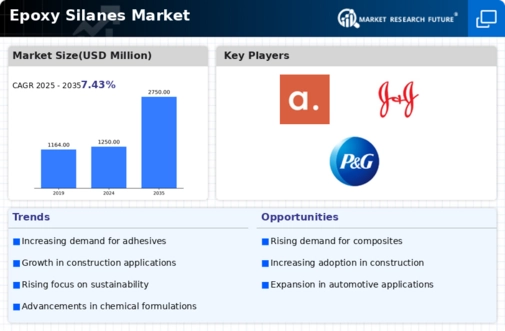Market Share
Epoxy Silanes Market Share Analysis
The Epoxy Silanes market uses a variety of strategies to position and grow its market share. Companies differentiate epoxy silanes from competitors as a major strategy. This may involve producing custom formulas, optimising chemical qualities, or making industrially specific products. Companies emphasize these unique properties to attract clients seeking higher performance or specific traits and increase market share.
Epoxy Silanes' market positioning depends on pricing. Companies may provide competitive pricing to attract cost-conscious customers and expand their market share. Premium pricing may be used to represent epoxy silanes as high-quality or following strict industry requirements, encouraging customers ready to pay more for perceived value. To position a brand and achieve market share, price and value must be balanced.
Distribution networks are crucial to Epoxy Silanes' market share. Strong ties with distributors, producers, and end-users ensure product availability. This accessibility makes Epoxy Silanes easier to supply, increasing market share. Companies can also use digital platforms and internet channels to reach more customers than traditional distribution techniques.
Brand recognition and targeted marketing initiatives are key to Epoxy Silanes market share positioning. A strong brand image and favorable product associations can greatly impact client preferences. Companies use industry-specific advertising, trade exhibitions, and internet promotions to increase brand awareness and market share.
The dynamic Epoxy Silanes market requires innovation and agility. Offering cutting-edge solutions can help companies lead in technology and industry. Continuous progress, new epoxy silanes with improved qualities, and environmentally friendly formulations make a more competitive market position, enticing consumers seeking sophisticated and sustainable chemical solutions.
Epoxy Silanes market share positioning also depends on collaboration and strategic collaborations. Alliances with raw material suppliers, research institutions, and other industry participants can improve product quality, streamline manufacturing, and boost market share. These cooperation give Epoxy Silanes a complete and competitive position.
Epoxy Silanes market share positioning depends on global and regional factors. Understanding regional wants and preferences helps organizations customize their strategy to specific markets, making them more targeted and effective.






Leave a Comment